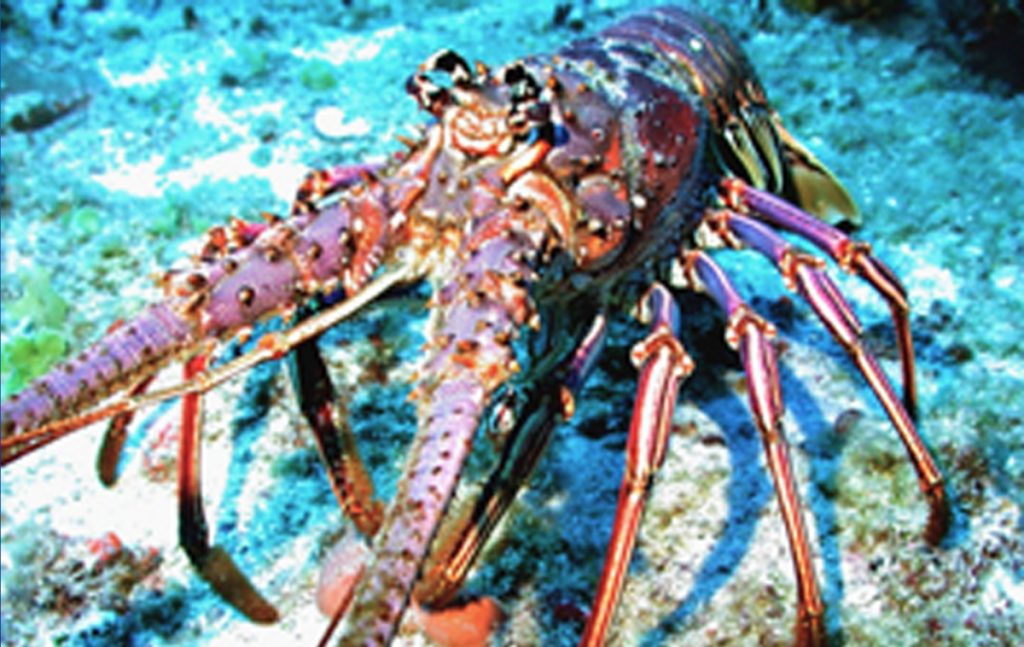This is your best opportunity to know which are the different types of Lobsters as well as about their main characteristics.
Table Of Content
American lobster (Homarus americanus)
They are decapod crustaceans from the family Nephropidae. This species belongs to the group of true lobsters and usually inhabit dark and cold waters, where there are rocks and other places that allow them to hide from their predators.
These lobsters are curious and lonely. They live a complex life of nocturnal habits, where they go out to explore in search of food. They are found on the coasts of the United States, especially in Maine; and in the coldest waters of Quebec and the maritime coast of the Atlantic provinces of Canada.
Their size ranges from 20 to 60 cm long and weigh between 0.5 and 4 kg. However, specimens of more than 1 meter long and 16 kilograms of weight have been found.
They are very valuable in terms of consumption, as they are highly appreciated by most diners and are often marketed alive. They are found in all the polar seas and inhabit great depths.
European lobster, H. Gammarus,
Like the American lobsters, the European lobsters belong to the group of true lobsters. They can reach up to sixty centimeters in length. It worth mentioning that they are a close relatives of the American lobsters. European lobsters have five pairs of legs, four of which are located in the thorax.
The front legs evolved over time (as in the case of most decapod), becoming pincers, one of them with sharp edges, which are used to cut, and the other with strong teeth that are used to crush.
H. Gammarus, have two long antennas and two much shorter ones.
This lobster differs from the American species (Homarus americanus) by its bluish black color with clear spots which contrasts with the reddish color of the American one.
They are also differentiated by their abundance, since the population of the American species is much bigger than that of the European species.
European lobster lives in rocky shelters at a depth that rarely exceeds 50 meters. They present nocturnal behavior patterns and their diet is made up of worms, bivalves and dead fish. We invite you to read our article Lobsters to learn more about crustaceans in general.
Here they are
Slipper Lobsters
This species belongs to the family Scyllaridae, which consists of 90 species of different crustaceans. They inhabit all the oceans and warm seas and are not true lobsters. They are closely related to spiny lobsters and furry lobsters.
Slipper lobsters have enlarged antennas, which are projected forward from the head as wide plates. Moreover, they have six segments in their head and eight segments in their thorax, which are collectively covered by a thick shell.
The six segments of the abdomen each have a pair of pleopods, while the thoracic appendages (maxillipeds) perform the function of legs and are therefore used for displacement functions.
The head segments have several buccal pieces and two pairs of antennas.
The first antennas are held in a long flexible stem and are used to detect the environment.
The second antennae are the most conspicuous, as they expand and flatten in large plates that extend horizontally forward from the head of the animal.
There is a considerable variation in size between the different species of slipper lobsters. The Mediterranean species Scyllarus pygmaeus is the smallest one, since its length rarely exceeds 55 millimeters (2.2 inches)
The largest species, Scyllarides haanii, can reach up to 50 centimeters (20 inches) long. These creatures usually inhabit the continental platforms, which are at depths of up to 500 meters (1.600 feet).
They feed on a variety of mollusks, including macaws, mussels and oysters, as well as crustaceans, polychaetes and echinoderms. They grow slowly and live a considerable age. The slipper lobsters´ most significant predators are the bony fish.
Spiny Lobsters
Spiny lobsters are also known as Caribbean Lobsters, and in scientific terms they are called Panulirus Argus. They are decapod crustaceans from the Palinura infraorder, and usually inhabit the main reefs and mangroves located in the Atlantic Ocean.
This species doesn’t belong to the group of true lobsters.
The presence of spines along their exoskeleton (outer skeleton) from the cephalothorax, to the rostrum and antennas, as well as the absence of large chelae (tweezers), are the anatomical characteristics that differentiate them from the true lobsters.
Blue Lobsters
The Cherax destructor, «Pacora», Yabby or Yabie, are actually river crabs or crayfish, which in some countries are known as blue lobsters, due to the similarity between the two species. We invite you to read our article Blue crayfish to learn more about them.
Furry Lobsters
Furry lobsters (sometimes called coral lobsters) are small decapod crustaceans, closely related to slippers lobsters and the spiny lobsters.
Their antennas are not as big as those of the previously mentioned species, and their body is covered with short hairs, which originates their names. Although they were previously considered a unique family, the furry lobsters were incorporated into the Palinuridae family in 1990.
Taxonomy
There are two genera, with three species among them:
Palinurellus Gundlachi-Caribbean hairy lobster, which inhabits the Caribbean Sea and the Atlantic coast of South America;
Palinurellus wieneckii-Mole lobster:
This species is native to the Indo-Pacific Ocean
Palibythus magnificus.
Sometimes called the musical furry lobster, is a species of furry lobster found in Polynesia. The species is known in Samoan as ula moana,
Mantis Shrimps:
These creatures don´t belong to the group of true lobsters neither. They are stomatopods, distant relatives of crabs, shrimps and lobsters. Mantis shrimp are one of the most interesting crustaceans found in the ocean.
Scientists study their strength, molecular structure and their eyesight because they are all unusual, they are very narrow!. We invite you to read our article a mantis shrimps, to learn more about this species.







